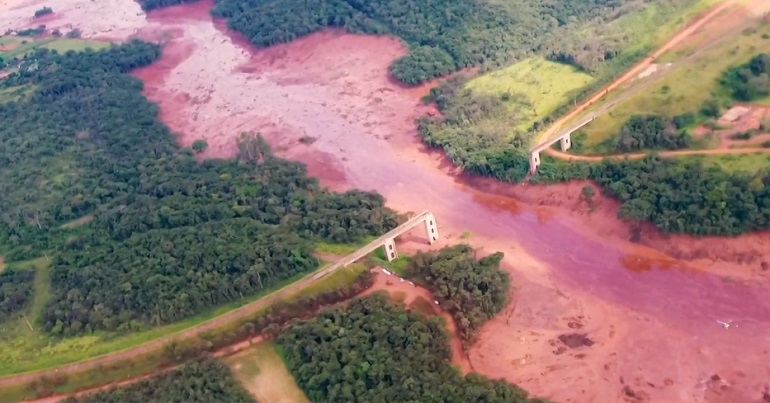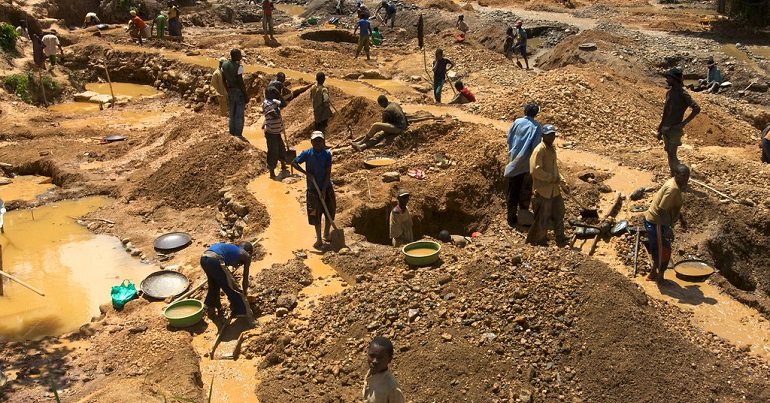Brazilian mining’s disaster: The Brumadinho Dam collapse two years on

Vale Mining executives agreed on a settlement worth $7 billion (US) with the state government of Minas Gerais, Brazil, last week. The money is to act as compensation for the Brumadinho Dam collapse which took place two years ago.
In January 2019, the 87m high dam outside the town of Brumadinho collapsed. It had been holding waste material from the nearby Córrego do Feijão iron ore mine.
The result was a mudflow containing millions of tonnes of toxic mining waste, which poured into the valley below at 50mph. The flow struck mining offices and a canteen, where employees were having lunch. The result was at least 270 deaths in what London Mining Network (LMN) describes as one of “Brazil’s worst industrial disasters”.
The Movement of People Affected by Dams in Brazil (MAB) did not accept the legitimacy of the deal that was signed on 4 February. MAB said in a press release they will challenge the deal in Federal court:
Since October 2020, the agreement has been built without any participation of the affected parties, representatives or commissions at the negotiation table.
It is clear in the accounts presented that the state reached its objectives of receiving almost 27 billion (US $7 billion), in exchange for only 9 billion for those affected, discounting even the emergency payment already made in these two years, which is an absurdity.
Many victims and survivors blame Vale for the disaster, along with several Brazilian politicians and officials. In May 2019, the BBC’s Newsnight showed internal documents in its programme indicating Vale knew the dam was at risk of collapse. The same documents showed they had calculated the cost to the company should the dam collapse. Vale responded by saying their internal guidelines were stricter than industry standards.
In 2020, Brazilian prosecutors charged former Vale CEO Fabio Schvartsman with 270 counts of homicide. Schvartsman, who stepped down in the aftermath, was charged along with several other from his company and TUV SUD – the German engineering consultants who inspected the dam. His trial is on hold after the Covid-19 pandemic delayed the results of forensic evidence.
The dam at Brumadinho was a tailings dam, which is designed to store the waste or “tailings” from mining. The one that collapsed was storing large amounts of waste behind pilled up banks of earth, which can be seen tumbling down in footage of the disaster.
Some industry experts believe the risk of tailings dam failures has become too high. Behind seemingly solid walls, tailings and earth can undergo liquefaction and undermine the integrity of the structure. The consequence of dam failure is also becoming greater, as companies hold more tailings behind than ever before.
In 2014, a dam at Mount Polley in Western Canada released 21 million tonnes of waste into the Quesnel Lake from a nearby copper and gold mine. In 2015, a tailings dam owned by Vale and BHP collapsed killing 20 people and destroying three villages in the same state of Minas Gerais. LMU reports that chemicals polluted over 600km of waterways.
After the Brumadinho collapse, studies found high levels of water turbidity in the Paraopeba River and increased levels of metal. Higher levels of iron have been found in Angueretá, 242km downstream of the disaster. LMN report the indigenous Pataxó Hã Hã Hãe have effectively lost the self-sustainability a now polluted river once gave them.
PS. We hope you enjoyed this article. Bright Green has got big plans for the future to publish many more articles like this. You can help make that happen. Please donate to Bright Green now.
PPS. Bright Green has an exciting series of events coming up. Join us for debates, interviews and much more.
Image credit: YouTube



Leave a Reply